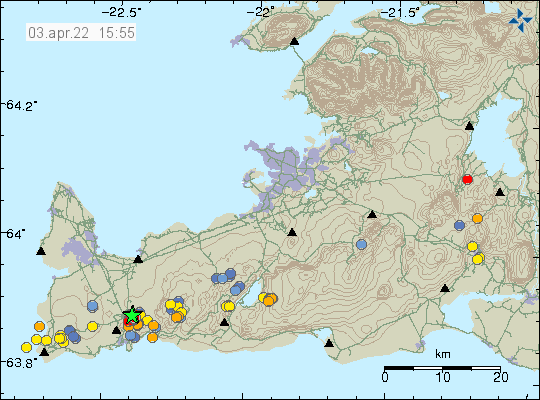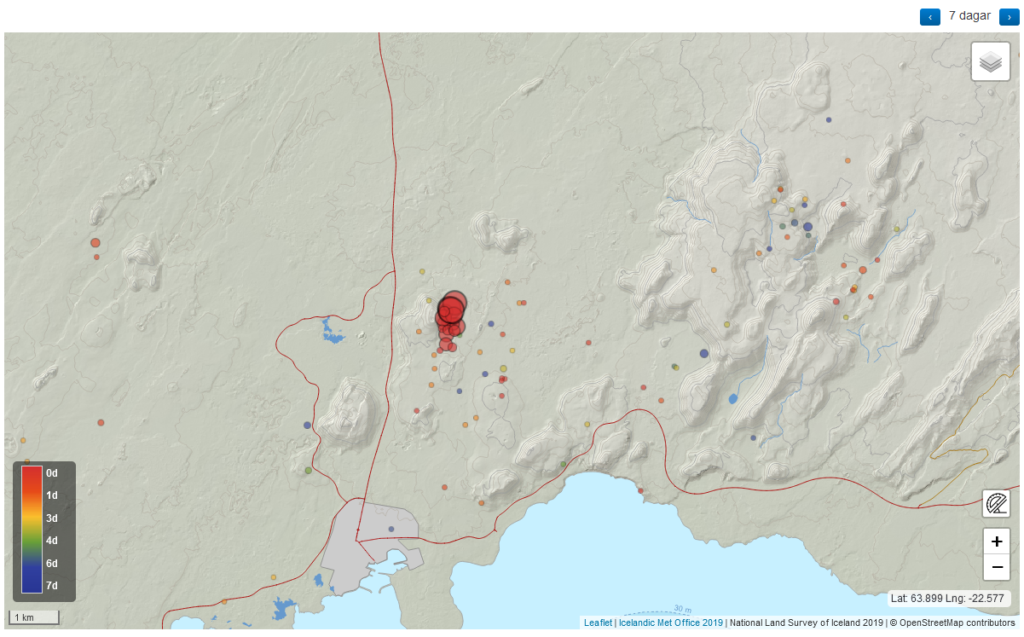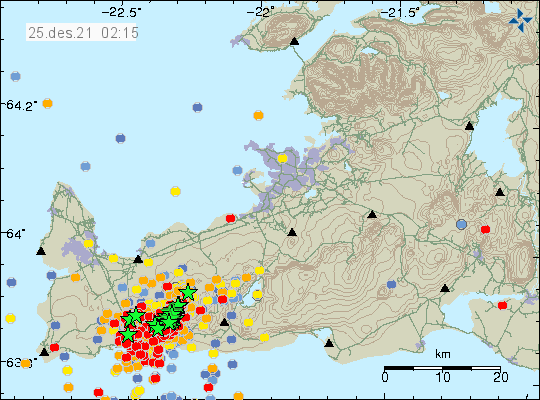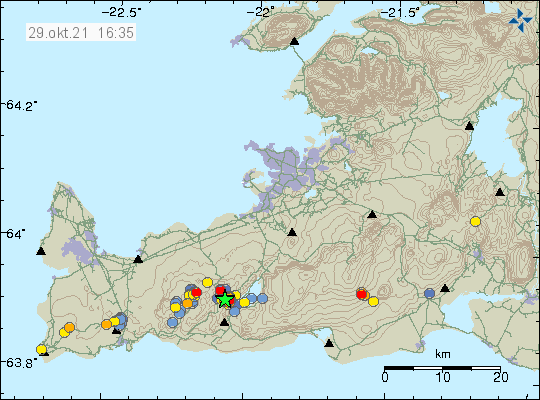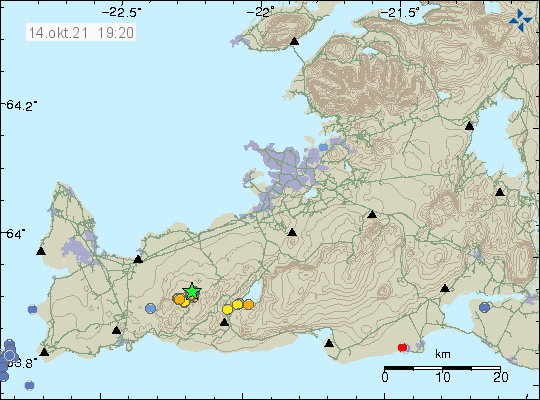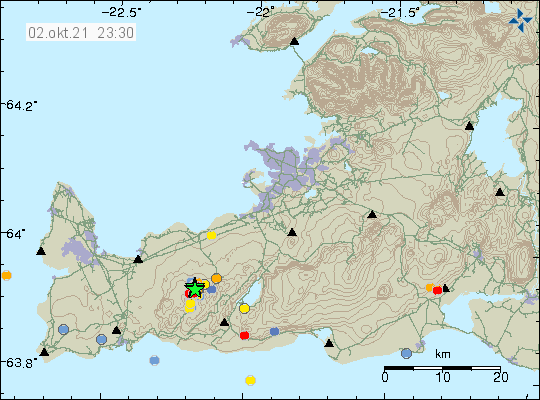Happy Easter. This Easter day (17-April-2022) in Iceland started with an earthquake swarm in Reykjanes volcano (GVP website is down). With the largest earthquake having a magnitude of Mw3,5 so far. Two other earthquakes took place with magnitude of Mw3,2 and Mw3,0. This earthquake swarm is out in the ocean and suggest that magma activity in Reykjanes volcano is increasing from what it was. This earthquake swarm started between 07:00 until 09:00 this morning and seems to be over at the writing of this article.
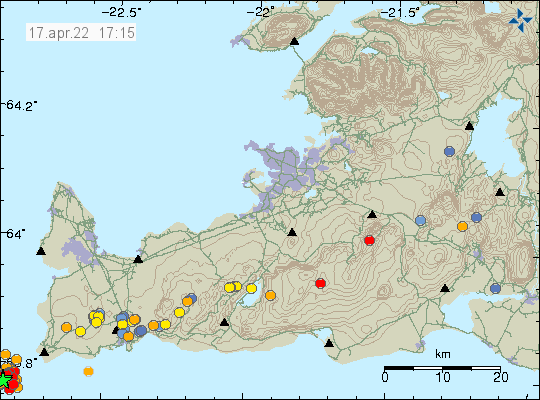
This earthquake swarm was not felt according to the news. This activity is taking place far from land for now. This also increases the chance that an eruption might happen out in the ocean. If that happens it might create new temporary islands in this area, since the ocean is rather shallow in this part of the Reykjanes ridge. Earthquake activity seems to be growing in Reykjanes volcano. If that continues is difficult to know, if it does it increases the chance of an eruption considerably in this area.
Donations
Please remember to support my work with donations if you can. Thanks for the support. 🙂

